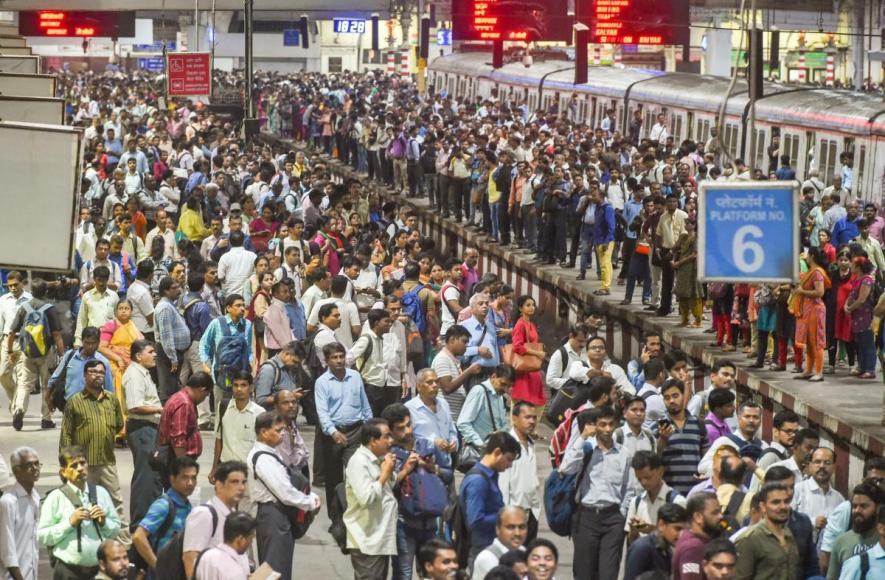World Population Hits 8 Billion; India on Cusp of Overtaking China

Representational Image. Image Courtesy: PTI
United Nations: In a milestone for humanity, the global population hit 8 billion on Tuesday after having added a billion people in the last 12 years, with India on the cusp of overtaking China as the world’s most populous country next year.
The United Nations said the global milestone signals major improvements in public health that have lowered the risk of death and increased life expectancy but the moment is also a clarion call for humanity to look beyond the numbers and meet its shared responsibility to protect people and the planet, starting with the most vulnerable.
"8 billion hopes. 8 billion dreams. 8 billion possibilities. Our planet is now home to 8 billion people," the United Nations Population Fund (UNFPA) tweeted.
"As we become 8 Billion Strong, @DieneKeita explains how a world of 8 billion is a global success story. Together we can build a world that allows 8 billion of us to thrive," it said in another tweet.
UN Secretary-General Antonio Guterres said unless the world bridges the yawning chasm between the global haves and have-nots, "we are setting ourselves up for an 8-billion-strong world filled with tensions and mistrust, crisis and conflict”.
India is projected to surpass China as the world’s most populous country in 2023. The population prospects report said that India’s population stands at 1.412 billion in 2022, compared with China’s 1.426 billion. India is projected to have a population of 1.668 billion in 2050, way ahead of China’s 1.317 billion people by the middle of the century.
The population clock flashed 8,000,000,000 on November 15, with the world having added one billion people in the last 12 years.
The UN described the global population reaching 8 billion as a “remarkable milestone” given that the human population numbered under 1 billion for millennia until around 1800, and that it took more than 100 years to grow from 1 to 2 billion.
By comparison, the increase of the world’s population over the last century has been quite rapid and despite a gradual slowing in the pace of growth, the global population is projected to surpass 9 billion around 2037 and 10 billion around 2058, according to UN estimates.
The world population is projected to reach a peak of around 10.4 billion people during the 2080s and to remain at that level until 2100, the World Population Prospects 2022 released by the United Nations Department of Economic and Social Affairs, Population Division in July this year had said.
UNFPA Executive Director Natalia Kanem said that a world of 8 billion is a milestone for humanity – the result of longer lifespans, reductions in poverty, and declining maternal and childhood mortality.
“Yet, focusing on numbers alone distracts us from the real challenge we face: securing a world in which progress can be enjoyed equally and sustainably. We cannot rely on one-size-fits-all solutions in a world in which the median age is 41 in Europe compared to 17 in sub-Saharan Africa. To succeed, all population policies must have reproductive rights at their core, invest in people and the planet, and be based on solid data” Kanem said.
The UN noted that while it took about 12 years for the world population to grow from 7 to 8 billion, the next billion is expected to take about 14.5 years (2037), reflecting the slowdown in global growth.
For the increase from 7 to 8 billion, around 70% of the added population was in low-income and lower-middle-income countries. For the increase from 8 to 9 billion, these two groups of countries are expected to account for more than 90 per cent of global growth.
Between now and 2050, the global increase in the population under age 65 will occur entirely in low-income and lower-middle-income countries, since population growth in high-income and upper-middle-income countries will occur only among those aged 65 years or over.
With 177m People, India Largest Contributor: UN
India was the largest contributor to the milestone, having added 177 million people, while China, whose contribution to the next billion in the global population is projected to be in the negative, the UN said.
India is expected to surpass China as the world’s most populous nation by next year.
The UN Population Fund (UNFPA), in a special graphic to mark the global population reaching eight billion, said Asia and Africa has driven much of this growth is expected to drive the next billion by 2037, while Europe's contribution will be negative due to declining population.
“India, the largest contributor to the 8 billion (177 million) will surpass China, which was the second largest contributor (73 million) and whose contribution to the next billion will be negative, as the world's most populous nation by 2023,” UNFPA said.
According to UNFPA estimates, 68% of India’s population is between 15-64 years old in 2022, while people aged 65 and older were 7% of the population.
China is expected to experience an absolute decline in its population as early as 2023, the report had said.
At the launch of the report in July, Under-Secretary-General for Economic and Social Affairs Liu Zhenmin had said that countries where population growth has slowed must prepare for an increasing proportion of older persons and, in more extreme cases, a decreasing population size.
“China provides a clear example. With the rapid ageing of its population due to the combined effects of very low fertility and increasing life expectancy, growth of China’s total population is slowing down, a trend that is likely to continue in the coming decades," Liu said.
The WHO pointed out that China has one of the fastest growing ageing populations in the world.
“The population of people over 60 years in China is projected to reach 28 per cent by 2040, due to longer life expectancy and declining fertility rates," the WHO said.
In China, by 2019, there were 254 million older people aged 60 and over, and 176 million older people aged 65 and over.
In 2022, the two most populous regions were both in Asia: Eastern and South-Eastern Asia with 2.3 billion people (29% of the global population) and Central and Southern Asia with 2.1 billion (26%).
China and India, with more than 1.4 billion each, accounted for most of the population in these two regions.
Get the latest reports & analysis with people's perspective on Protests, movements & deep analytical videos, discussions of the current affairs in your Telegram app. Subscribe to NewsClick's Telegram channel & get Real-Time updates on stories, as they get published on our website.
























